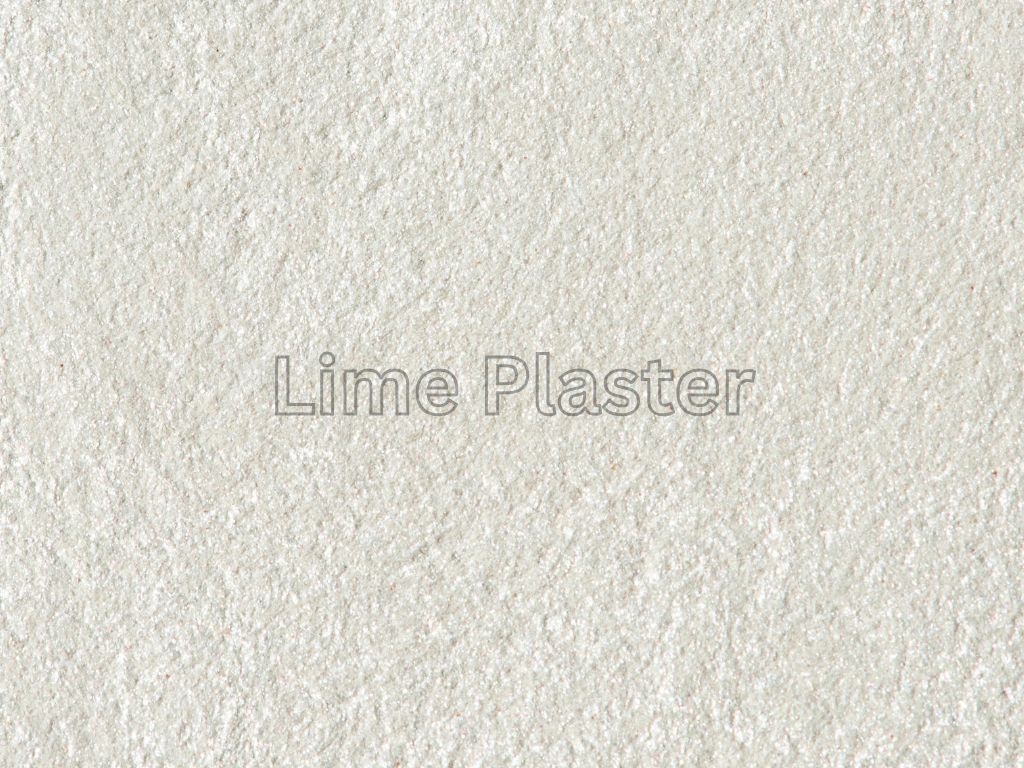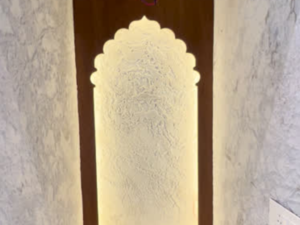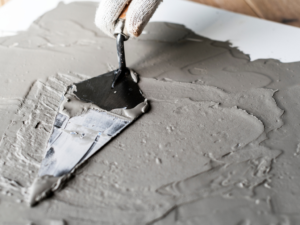Lime Plaster
Today, with its emphasis on climate awareness and sustainable living, homeowners are looking for building materials that reduce the impact on the environment without compromising on quality or looks. One such green solution for modern homes is lime plaster, a centuries-old but highly innovative material with an ideal combination of sustainability, health promotion, and ageless beauty.
As opposed to traditional plasters and man-made paints, it is composed of natural limestone and has special properties that make it the perfect choice for environmentally friendly construction. With green building philosophies on the rise, it is seeing a well-deserved comeback in modern architecture.
What is Lime Plaster?
It is a historic building material made up of limestone that has been calcined, combined with water, and sometimes combined with natural aggregates such as sand or fibres. Its history stretches back thousands of years—from Roman buildings to medieval cathedrals—and now it is increasingly being rediscovered on the basis of sustainability and adaptability in contemporary building construction.
Two forms of lime plaster exist:
Non-hydraulic lime plaster – Dries up by soaking CO₂ from the atmosphere and is used for interior walls.
Hydraulic lime plaster – Has natural additives that enable it to set even when it’s damp, used for bathroom walls and exterior finishes.
It is not hard and stiff like rigid cement or gypsum plasters, so it cannot crack when buildings settle with time.
Environmental Benefits of Lime Plaster
Low Carbon Footprint
It takes a lot less energy to make and compared to cement-based plasters. Limestone is only heated to 900°C (against 1,450°C for cement), lowering CO₂ emissions. Even better, it absorbs CO₂ back as it sets, a carbon-free material in the long run.
Breathability & Humidity Control
Due to its permeable structure, it controls indoor humidity levels, hindering the development and enhancing air quality—a significant benefit for health-conscious home owners.
Recyclable & Non-Toxic
When its lifespan is over, lime plaster can be recycled and reused or allowed to biodegrade harmlessly. Unlike artificial paint and plaster, it has no volatile organic compounds (VOCs) or microplastics and is thus a genuinely sustainable option.
Energy Efficiency
Since it adsorbs and gives off moisture, it naturally stabilizes indoor temperatures, minimizing the need for heating and cooling systems.
Disadvantages of Lime Plaster
- Higher cost than gypsum or cement plaster
- Slow curing time (weeks for full hardness)
- Requires skilled application (few expert installers)
- Soft when fresh (needs protection during early curing)
- Not ideal for freezing climates during application
Aesthetic & Functional Appeal
Aside from its green advantage, it is unparalleled in design and performance versatility:
Personalized Textures – Create anything from smooth, highly polished finishes to coarse, hand-troweled appearances.
Natural Hues – Mineral colorants can be introduced for deep, earthy colors that form a stunning patina with age.
Longevity – Subjected to good maintenance, lime walls can endure for centuries, growing stronger with age.
Lime Plaster vs. Other Plasters
- Lime Plaster vs. Gypsum Plaster
Breathability: Lime permits moisture passage; gypsum does not.
Setting Time: Gypsum sets quicker; lime needs longer curing.
Eco-Friendliness: Lime is carbon-neutral; gypsum is extracted.
- Lime Plaster vs. Cement Plaster
Flexibility: Lime expands with buildings; cement cracks.
Environmental Impact: Cement has high CO₂ emissions.
Durability: Cement is more hard but less repairable.
- Lime Plaster vs. Clay Plaster
Moisture Handling: Both breathable, but lime is better suited for damp climates.
Strength: Lime is harder for exteriors.
Aesthetic: Clay provides warmer colors; lime produces a lighter finish.
- Optimum Use Cases for Each
Lime: Restored buildings, humid environments, eco-homes.
Gypsum: Fast interior jobs.
Cement: Structural requirements (although not best for breathability).
Clay: Dry environments, decorative finishes.
Is Lime Plaster Suitable for Your House?
Optimum Applications
Interior walls & ceilings of modern & historic houses
Humid spaces (bathrooms, kitchens) when working with hydraulic lime
Eco-friendly home extensions and new constructions
Installation & Maintenance
Requires expert use (best left to experts).
Is improved by periodic re-coating but ultimately becomes more resilient.
Cost vs. Value
Although it is more expensive to use initially than gypsum or paint, its durability, energy conservation, and natural advantages make it a worthwhile investment in the long term.
Conclusion
It isn’t just a wall finish—it’s a statement of sustainability, health, and enduring beauty. With its low carbon footprint, natural breathability, and timeless appeal, it’s the ultimate eco-friendly choice for modern homes.
If you’re building or renovating with the environment in mind, it offers a durable, non-toxic, and visually stunning solution. Contact a specialist today or test a sample to experience its benefits for yourself!
By choosing lime plaster, you’re not just enhancing your home—you’re supporting a greener future.




